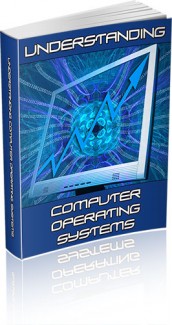
 License Type: Private Label Rights
License Type: Private Label Rights  File Size: 27,405 KB
File Size: 27,405 KB File Type: ZIP
File Type: ZIP
 SKU: 3155
SKU: 3155  Shipping: Online Download
Shipping: Online Download
Ebook Sample Content Preview:
Every program running on a computer whether it is a background service or an application is called a process. As long as von Neumann architecture is used to build a computer, only one process per CPU can be run at one time.
Older computer operating systems such as MS-DOS did not try to bypass this limit with the exception of interrupt processing and only one process could be run under them. Mainframe operating systems have had multi-tasking capabilities since the early 1960’s. Modern operating systems enable concurrent execution of many processes at once via multi-tasking even with one CPU.
Process management is an operating system’s way of dealing with running multiple processes at once. Since most computers contain one processor with one core, multi-tasking is done by simply switching processes quickly. Depending on the operating system, as more processes run, either each time slice will become smaller or there will be a longer delay before each process given a chance to run.
Process management involves computing and distributing CPU time as well as other resources. Most operating systems allow a process to be assigned a priority which affects its allocation of CPU time. Interactive operating systems also employ some level of feedback in which the task with which the user is working receives higher priority.
Interrupt driven processes will normally run at a very high priority. In many systems, there is a background process such as the System Idle Process in Windows which will run when no other process is waiting for the CPU.
It's tempting to think of a process as an application, but that gives an incomplete picture of how processes relate to the operating system and hardware. The application you see (word processor, spreadsheet or game) is, indeed, a process, but that application may cause several other processes to begin, for tasks like communications with other devices or other computers.
There are also numerous processes that run without giving you direct evidence that they ever exist. For example, Windows XP and UNIX can have dozens of background processes running to handle the network, memory management, disk management, virus checking and so on.
- File Size:27,405 KB
- License: Private Label Rights
- Category:Ebooks
- Tags:2010 Ebooks Private Label Rights







